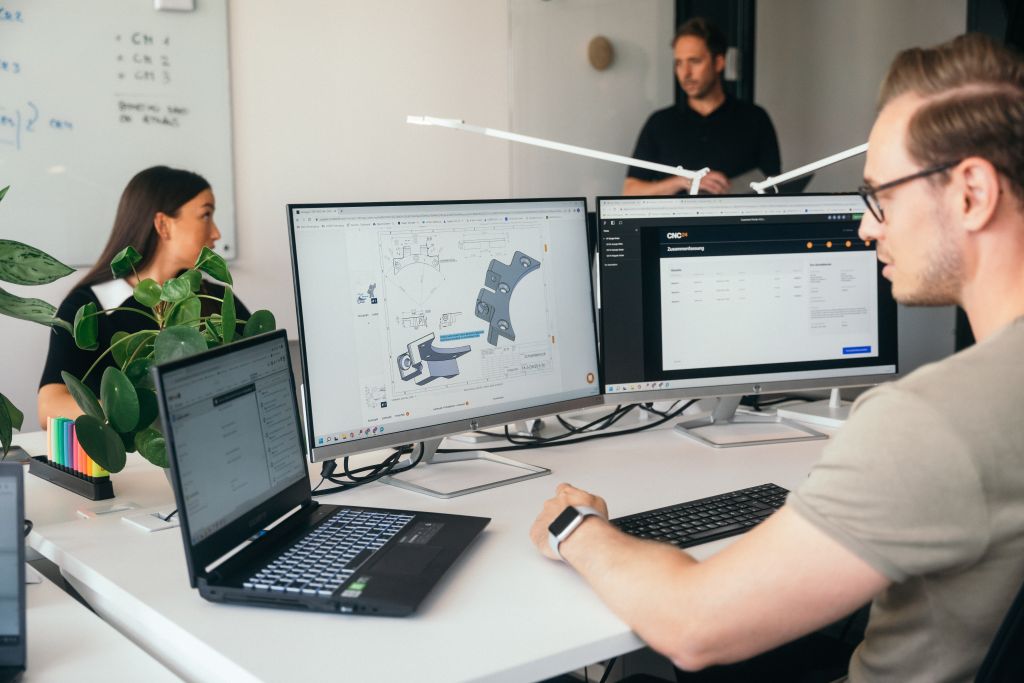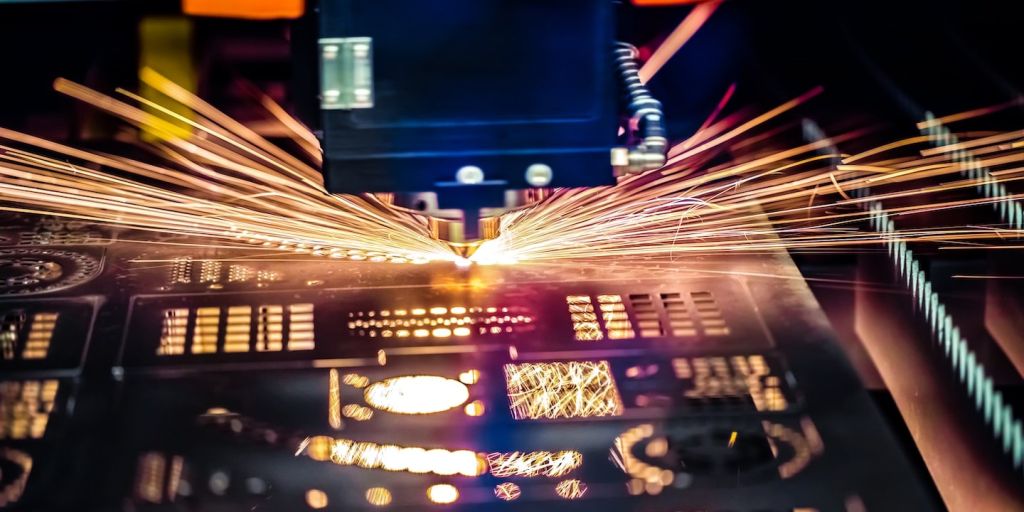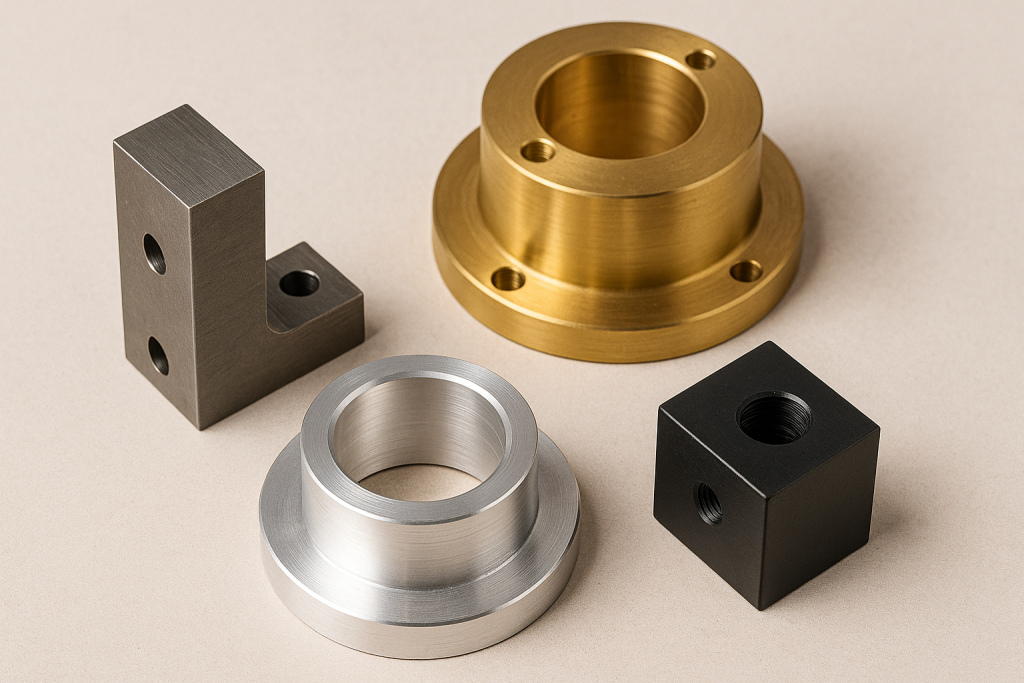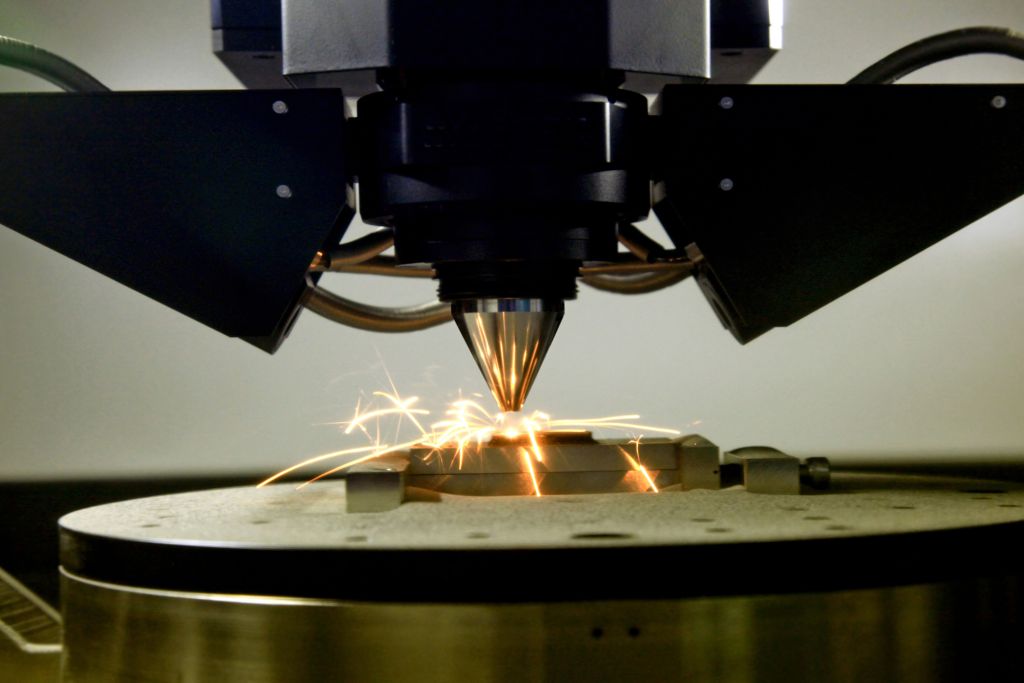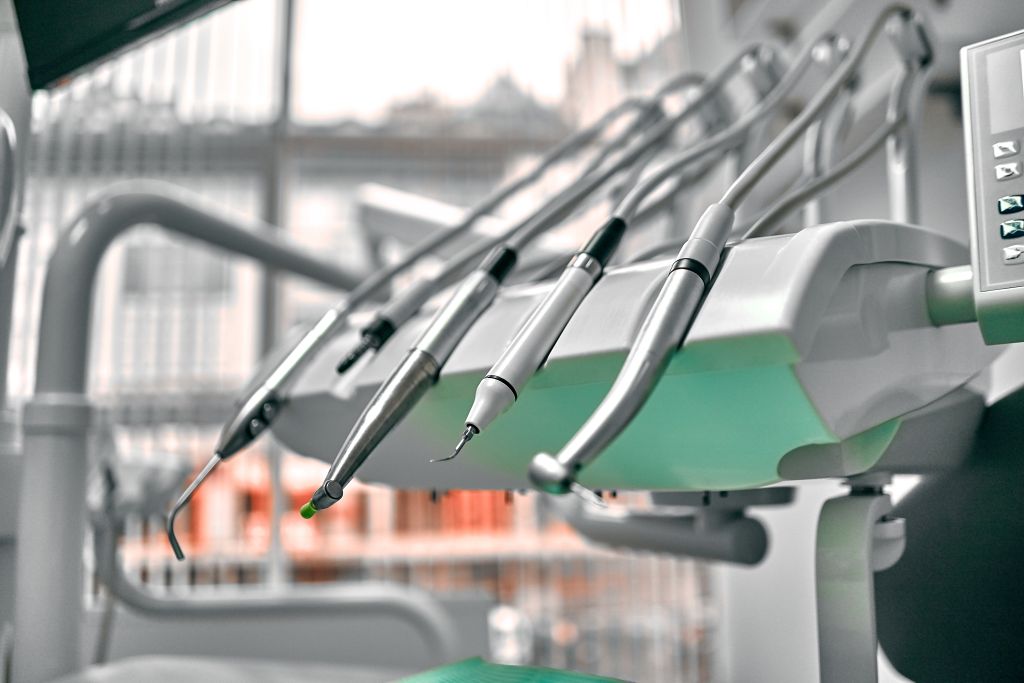Flame cutting vs. plasma cutting: The ultimate comparison for metalworking in 2025
Flame cutting vs. plasma cutting: Which cutting technology is right for your project? Our comparison guide shows the key differences in quality, speed and costs. From material selection to cost-effectiveness - get all the facts you need to make the right decision in metalworking.
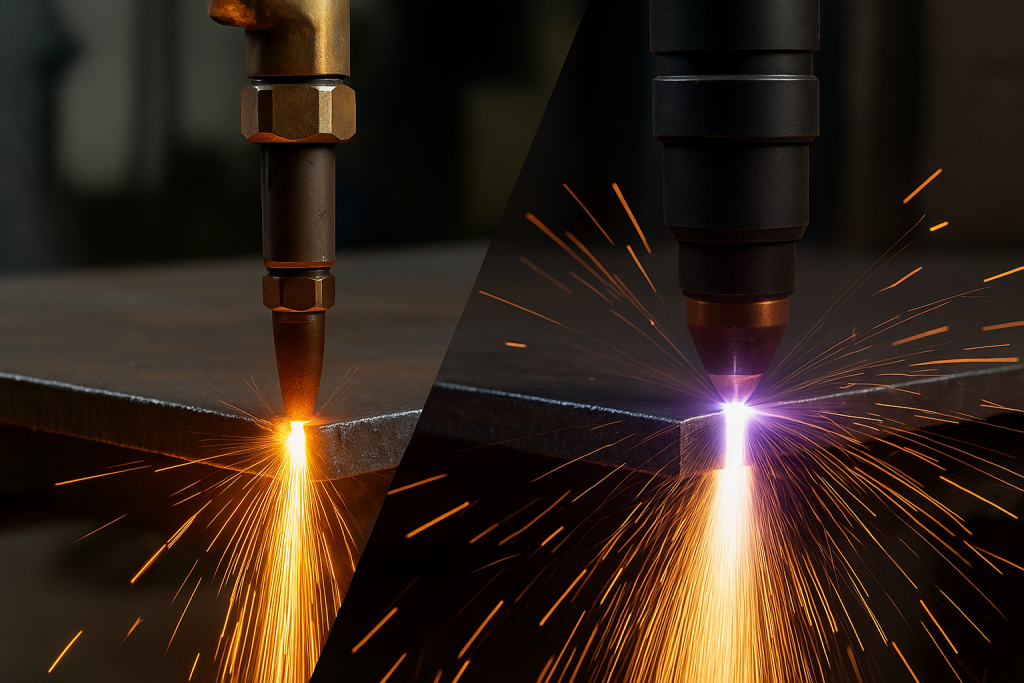
Introduction: Thermal cutting processes in modern manufacturing
In metalworking, manufacturing companies are faced with the important decision between different cutting processes. Flame cutting and plasma cutting are among the most commonly used thermal cutting processes, but which method is the right one for your project? This comprehensive guide will show you the differences, advantages and disadvantages as well as the optimum areas of application for both processes.
What is flame cutting? Basics and how it works
Flame cutting (also known as oxy-fuel cutting ) is a proven thermal cutting process that has been used in industry for over 100 years. In this process, an acetylene-oxygen flame is used to heat the material to ignition temperature.
Flame cutting process: How the process works
- Preheating: The acetylene-oxygen flame heats the steel to approx. 1,000°C
- Ignition: Pure oxygen is supplied when the ignition temperature is reached
- Combustion: The oxygen jet burns the metal
- Slag discharge: The resulting slag is blown out of the kerf
These processes take time, tie up expertise and are often carried out using different tools or by email. Despite their high relevance, they are rarely fully digitized.
Flame cutting materials: What can be cut?
Autogenous cutting is only suitable for unalloyed and low-alloy steels. Materials such as:
- Structural steel (S235, S355)
- Welding steel
- Structural steel
- Weatherproof steels
Important note: Stainless steel, aluminum or other non-ferrous metals cannot be processed with flame cutting.
Plasma cutting: Modern technology for versatile applications
Plasma cutting is a state-of-the-art thermal cutting process that uses an electric arc to transform a gas into a plasma state. At temperatures of up to 30,000°C, the plasma jet melts the material precisely.
Plasma cutting process: Technology in detail
- Arc generation: Electric arc between electrode and workpiece
- Gas ionization: The process gas is ionized into plasma
- Material melting: Plasma melts the metal locally
- Melt discharge: Gas flow removes the melt from the kerf
Plasma cutting materials: Universal application possibilities
Plasma cutting can process all electrically conductive metals:
- Structural steel and alloy steels
- Stainless steel (1.4301, 1.4404, 1.4571)
- Aluminum and aluminum alloys
- Copper and copper alloys
- Titanium
- Brass
Get a quote for your parts
Flame cutting vs. plasma cutting: Direct comparison
Material thicknesses in comparison
| Procedure | Minimum strength | Maximum strength | Optimal range |
|---|---|---|---|
| Flame cutting | 5 mm | 1,000+ mm | 40-300 mm |
| Plasma cutting | 0.5 mm | 160 mm | 1-40 mm |
Cutting speed & quality
Plasma cutting speed:
Plasma cutting is characterized by exceptionally high feed rates with thin material thicknesses, which leads to maximum productivity in sheet metal production.
- 5 mm steel: up to 12,000 mm/min
- 10 mm steel: up to 5,000 mm/min
- 20 mm steel: up to 2,000 mm/min
Flame cutting speed:
Autogenous cutting achieves its optimum efficiency with large material thicknesses, where the constant cutting speed remains independent of the workpiece geometry.
- 20 mm steel: approx. 800 mm/min
- 50 mm steel: approx. 400 mm/min
- 100 mm steel: approx. 200 mm/min
Plasma cutting quality
Plasma cutting is characterized by a high speed when cutting thin sheets
- Narrow kerf (1-4 mm)
- Low heat-affected zone
- Minimal warpage
- Clean cut edges
- Precise contours possible
Flame cutting quality:
The autogenous process ensures right-angled cut surfaces with large material thicknesses and enables direct weld seam preparation through controlled edge geometry.
- Wider kerf (3-6 mm)
- Larger heat-affected zone
- Possible distortion with thin sheets
- Cut edges are often reworked
- Straight cut for thick materials
Pros and cons
Flame cutting advantages and disadvantages
Flame cutting advantages
- Extremely thick materials: cuts up to over 1,000 mm thick possible
- Low acquisition costs: simple and robust technology
- Low operating costs: only gas and oxygen required
- Portability: Mobile application possible on construction sites
- Weld seam preparation: Ideal V-seam production
- Low maintenance: Few wearing parts
Flame cutting disadvantages
- Limited choice of materials: Only suitable for steel
- Slow speed: particularly inefficient with thin sheets
- High heat input: Large heat-affected zone and distortion
- Reworking required: cut edges often need to be reworked
- Safety risks: Handling gas cylinders requires specialist knowledge
- Environmental impact: high CO2 emissions due to combustion
Pros and cons
Plasma cutting advantages and disadvantages
Plasma cutting advantages
- Universal material processing: All conductive metals can be cut
- High cutting speed: Up to 15x faster than flame cutting
- Excellent cutting quality: precise edges, minimal reworking
- Complex geometries: Small cut-outs and tight radii also possible
- Low heat-affected zone: Minimal distortion and microstructural changes
- CNC integration: Fully automatic machining possible
- More environmentally friendly: no CO2 emissions through combustion
Plasma cutting disadvantages
- Limited material thickness: Economical mostly up to 40-50 mm
- Higher acquisition costs: Complex technology with power source
- Wear parts: Regular replacement of electrodes and nozzles
- Energy costs: High power consumption with thick materials
- Protective measures: Extraction and UV protection required
- Bevel position: Possible edge bevel for thicker materials
Costs of flame cutting vs. plasma cutting
Acquisition costs
Flame cutting costs:
- Hand burner: 200-500 €
- Machine burner: 5,000-20,000 €
- CNC cutting system: 50,000-200,000 €
Plasma cutting costs:
- CNC plasma system: 80,000-500,000 €
- Hand plasma: 1.000-5.000 €
- Machine plasma: 15,000-50,000 €
Operating costs per meter of cut
Material thickness 10 mm steel:
- Flame cutting: approx. 0.15 €/m
- Plasma cutting: approx. 0.25 €/m
Material thickness 50 mm steel:
- Flame cutting: approx. 0.40 €/m
- Plasma cutting: approx. 1.20 €/m
Note: Costs vary depending on energy prices, wearing parts and working time
Get a quote for your parts
Areas of application: When to choose which method?
Flame cutting applications
Ideal for:
- Steel construction and design
- Shipbuilding and offshore
- Mechanical engineering (thick base plates)
- Heavy industry
- Construction site cuttings
- Scrap processing
Typical projects:
- Beams and profiles > 40 mm
- Flanges and base plates
- Weld seam preparation
- Repair work on site
Plasma cutting applications
Ideal for:
- Sheet metal processing (1-40 mm)
- Vehicle construction and body parts
- HVAC and ventilation technology
- Advertising signs and facades
- Arts and crafts and design
- Prototype construction
Typical projects:
- Thin sheets and precision parts
- Complex contours and cut-outs
- Stainless steel components
- Aluminum blanks
Quality standards and norms
Relevant standards for thermal cutting processes
- DIN EN ISO 9013: Quality groups for thermally cut edges
- DIN EN ISO 14731: Weld seam preparation by flame cutting
- DIN EN ISO 12584: Classification of plasma cuts
Quality classes in comparison
| Quality feature | Flame cutting | Plasma cutting |
|---|---|---|
| Perpendicularity | ±1-3° | ±0,5-2° |
| Roughness | Ra 10-100 μm | Ra 5-50 μm |
| Burr formation | 0.5-3 mm | 0.1-1 mm |
| Dimensional accuracy | ±0.5-2 mm | ±0.2-1 mm |
Safety and occupational health
Flame cutting safety
Hazards:
- Explosion due to gas mixtures
- Burns from flames and hot surfaces
- Eye damage due to bright flame
- Smoke development
Protective measures:
- Welding helmet with filter
- Heat-resistant protective clothing
- Extraction in closed rooms
- Professional gas storage
Plasma cutting safety
Hazards:
- UV radiation through electric arc
- Electric shock due to improper operation
- Smoke and dust development
- Noise development
Protective measures:
- Automatic helmet with UV protection
- Extraction system mandatory
- Hearing protection for loud systems
- Secure power supply
Outlook for the future: Developments in cutting technology
Innovative flame cutting technologies
- Powder burners: For stainless steel and cast iron
- High-performance torch: Higher cutting speeds
- Hydrogen burner: more environmentally friendly alternative
Progress in plasma cutting
- High definition plasma: Better cutting quality
- Water table technology: Reduced smoke development
- AI-controlled parameters: Automatic optimization
- Hybrid systems: combination with laser technology
Decision-making aid: Which procedure is the right one?
Select flame cutting if:
- Material thickness > 40 mm
- Only mild steel to be cut
- Low investment costs required
- Mobile application required
- Focus on weld seam preparation
Select plasma cutting when:
- Material thickness < 40 mm
- Various metals can be processed
- High cutting quality required
- Complex contours required
- Focus on productivity
FAQ
Frequently asked questions about flame cutting & plasma cutting
Can stainless steel be processed with flame cutting?
No, conventional flame cutting only works with unalloyed and low-alloy steels. Stainless steel forms an oxide layer that prevents the process. Plasma cutting is the better choice for stainless steel.
Up to what material thickness can plasma cut?
High-quality plasma systems produce clean, high-quality cuts up to approx. 50 mm. Separating cuts are also possible with thicker materials, but with reduced cutting quality.
Which process is more environmentally friendly?
Plasma cutting is generally more environmentally friendly, as no combustion takes place and therefore no CO2 is produced. However, the power consumption must be taken into account.
How much does cutting cost per meter?
The costs vary greatly depending on the material, thickness and process. As a guide: flame cutting 0.10-0.50 €/m, plasma cutting 0.20-1.00 €/m for comparable material thicknesses.
Can both processes be automated?
Yes, both processes can be fully integrated into CNC systems. Modern systems offer automatic material recognition and parameter optimization.
How does the cut quality differ?
Plasma cutting generally produces smoother cut edges with less roughness and a narrower heat-affected zone. Flame cutting produces rougher edges that often need to be reworked.
Do you have any questions
Conclusion: The right choice for your project
The decision between flame cutting and plasma cutting depends primarily on the material, thickness and desired quality. While flame cutting is unbeatable for extremely thick steel plates, plasma cutting impresses with its versatility and precision for thin to medium material thicknesses.
CNC24: Your partner for professional cutting solutions
At CNC24, you receive top-quality components in both plasma cutting and flame cutting. Our experts automatically select and guarantee the optimum process for your project:
- Best cutting quality thanks to modern systems
- Cost-optimized process selection
- Short delivery times thanks to efficient processes
- Comprehensive material selection from structural steel to stainless steel
Enquire now free of charge and benefit from over 30 years of experience in metalworking!
About CNC24
CNC24 is the transparent manufacturing cloud for the global procurement of components. With just one contract and contact partner, CNC24 provides access to more than 500 selected manufacturers from all over the world.
CNC24 specializes in plastic and metal components using the production methods of milling, turning, sheet metal processing, die casting, injection moulding and 3D printing.
For quality control, all parts undergo an additional test process in the in-house measuring center before they are delivered. CNC24 was founded in 2019 by co-founders Willi Ruopp and Marlon Gerat. The start-up serves all industrial sectors with a need for production parts – from special machinery and plant engineering to IOT and medical, testing and measurement technology.
Get a quote for your parts
